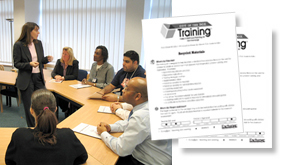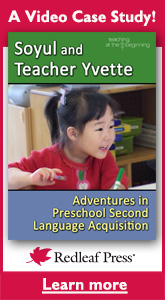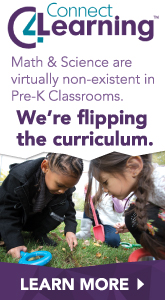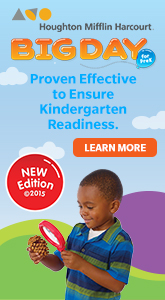ExchangeEveryDay Past Issues
 << Previous Issue
| View Past Issues | | Next Issue >>
<< Previous Issue
| View Past Issues | | Next Issue >> -Viktor Frankl, from his book, Man’s Search for Meaning
In the Exchange article "Waste Materials as Resources," which serves as the basis for an Out of the Box Training Kit by the same name, Tiziana Ciccone describes how they started to insert waste materials (loose parts) into their curriculum....
"Then it was time to invite the children to engage with the loose materials. It was not difficult to entice them. Their natural curiosity led them; and they were encouraged to investigate and explore texture, dimension, and various properties of the materials...
"The children were uncertain of the uses for these materials, and in an attempt to coax them the teachers began to give the loose materials form. They began using the materials themselves designing collages, making flowers, butterflies, and scenery. Although this seemed restrictive, we found it necessary to give the children some incentive to explore the materials themselves. Eventually the children began to feel more comfortable on their own and the teachers stepped back. It was amazing to watch the children surpass our expectations!
"...As the children became more familiar with the loose materials, they began to work in new contexts designing elaborate backdrops for stories, forests, labyrinths, and representations of their theories on how things work. They began testing their theories, and making predictions and redesigning their work to fit their new models of thinking.
"...Parents began to understand what the vast collections were for. However, they also began to ask questions regarding the usefulness of the experiences. Yes, of course, the work was beautiful. But was it educational? What were the children learning?
"Prompted by these questions from parents, we began to look at the loose materials in a new way. We asked how this unique collection might meet the demands placed on us to support the guidelines provided by the Ontario Curriculum for Kindergarten. And so we were challenged to add yet another aspect to our work: The materials became tools for supporting math, literacy, science, and other concepts that parents wanted to see in their children's education."
40% Off OOBs for 48 Hours Only!
Enter coupon code oob40 when prompted.
Run a professional development training session with Exchange's popular Out of the Box Training Kits. An article from Exchange magazine serves as the foundation for each Kit and is included as a handout.
 Each Kit includes step-by-step instructions to prepare, conduct, and evaluate your training session. The Kits are also flexible enough to allow you to include your own ideas and exercises to meet any special needs of your staff. Offer applied to PDF versions only.
Each Kit includes step-by-step instructions to prepare, conduct, and evaluate your training session. The Kits are also flexible enough to allow you to include your own ideas and exercises to meet any special needs of your staff. Offer applied to PDF versions only.
(Sale ends 11:59 PST 05/05/2016. Not valid on bulk purchase discounts. Offer applied to PDF versions only. May not be combined with any other offer.)




Comments (2)
Displaying All 2 CommentsGokul kidz preschools pvt ltd
Thane, Maharashtra, India
we have been doing extensive use of all waste material for last so many years in our schools and included this in our curriculum as free play. To give an example, When I went to the tailors shop I saw his helper carry a big bag of colourful rags and a bag of empty thread reels, out of the shop. I requested the tailor to give it to me. He was surprised that what am I going to do with it. we also give them various sized plastic bottles, bottle caps, corks, feathers etc. When children play with this they acquire skills of estimation, designing, concepts like heavy and light, develop fine motors, make collage and many other concepts.
Office of Child Care( MSDE)
Eldersburg, Maryland, United States
Years ago when I had my child care center there was a place run by the Maryland child care Network called "Restore" I used to go downtown once every two or three months to fill a bag for 2-3 dollars and bring back all types of recycled items and let the children in each classroom go at it . The thought processes that went into the designs of the children were amazing.
Post a Comment